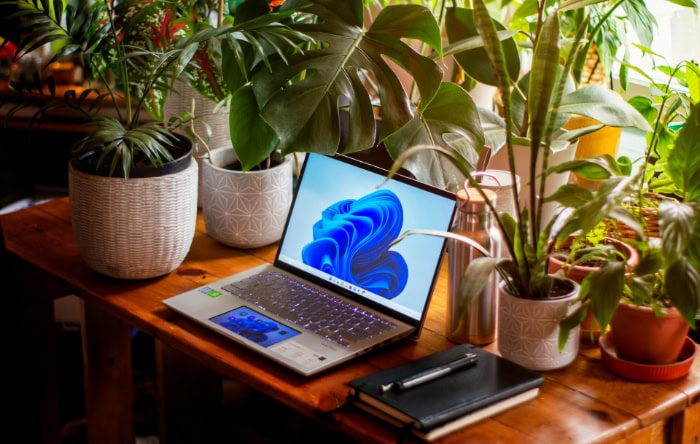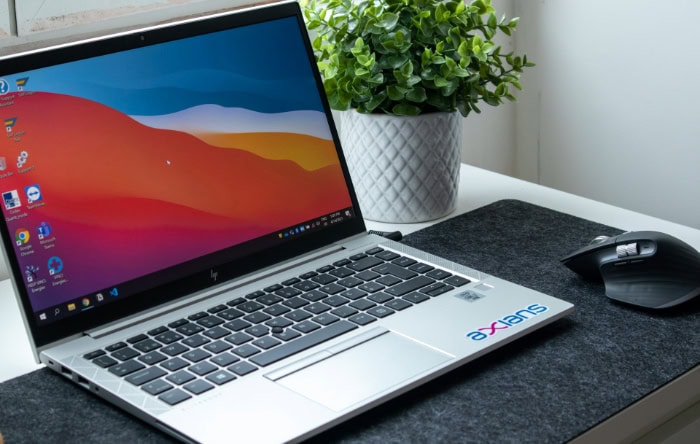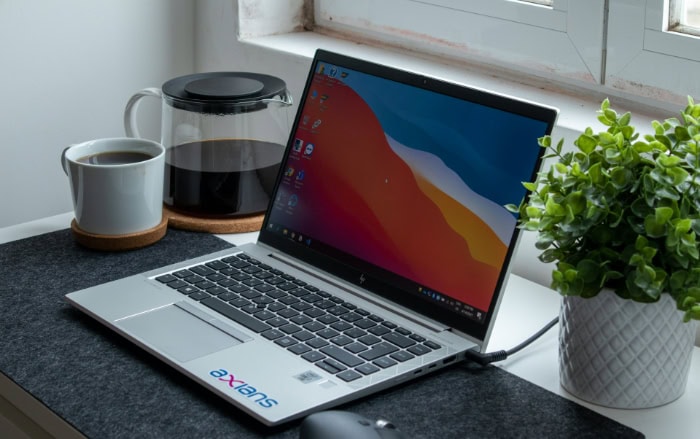How to Improve PC Performance in Windows: Tune-Up Tips

Slow computers frustrate users and hinder productivity. As Windows PCs age, they often become sluggish, with longer boot times, laggy applications, and frequent freezes.
These issues can affect both Windows 10 and 11 systems, despite Microsoft's ongoing efforts to enhance performance. Recognizing the signs of a struggling PC is crucial: slow startups, unresponsive programs, and excessive fan noise are common indicators.
Fortunately, numerous strategies exist to revitalize your Windows machine, from quick fixes to more involved hardware upgrades.
Immediate Performance Boosters
Improving your PC's performance doesn't always require extensive technical knowledge or time-consuming processes. Several quick and effective methods can provide immediate boosts to your system's speed and responsiveness.
These techniques are accessible to users of all skill levels and can make a noticeable difference in your day-to-day computing experience.
Manage Active Programs and Browser Tabs Effectively
One of the simplest ways to enhance your PC's performance is by managing the programs and browser tabs you have open. Many users unknowingly overload their system's resources by running numerous applications simultaneously or keeping countless browser tabs open.
To address this, start by closing any unnecessary programs running in the background. You can use the Task Manager (press Ctrl + Shift + Esc) to identify resource-hungry applications and close them if they're not needed.
Pay special attention to programs that automatically start with Windows, as these can silently consume resources.
For web browsers, consider using extensions that suspend inactive tabs. This can significantly reduce memory usage, especially if you tend to keep many tabs open.
Popular browsers like Chrome and Firefox offer such extensions, which can free up valuable system resources.
Additionally, make it a habit to regularly review and close tabs you no longer need. This not only improves system performance but also helps maintain a more organized browsing experience.
Update Windows and Drivers
Keeping your operating system and drivers up-to-date is crucial for both performance and security. Microsoft regularly releases updates for Windows that include performance improvements, bug fixes, and security patches.
To check for Windows updates, go to Settings > Update & Security > Windows Update. Click “Check for updates” and install any available updates.
It's advisable to restart your computer after installing updates to ensure all changes take effect.
Updating drivers is equally important, especially for critical components like graphics cards, network adapters, and storage controllers. While Windows often handles driver updates automatically, you can manually check for updates through the Device Manager or by visiting the manufacturer's website for your specific hardware components.
Updated drivers can resolve compatibility issues, fix bugs, and sometimes provide significant performance improvements, particularly for graphics-intensive tasks.
Measure Your Baseline Performance
Before making any changes to your system, it's helpful to establish a baseline of your current performance. This allows you to quantify the improvements you achieve through various optimization techniques.
Windows provides built-in tools for measuring system performance. The Task Manager offers a quick overview of CPU, memory, disk, and network usage. For more detailed analysis, use the Performance Monitor (type “perfmon” in the Start menu search bar).
Third-party benchmarking tools can provide more comprehensive performance metrics. Popular options include UserBenchmark for overall system performance, CrystalDiskMark for storage speed, and 3DMark for graphics performance.
Record your baseline scores or metrics in a document or spreadsheet. After implementing performance-boosting measures, run the same tests again to compare results. This approach helps you identify which optimizations have the most significant impact on your system's performance.
Software Optimizations

Windows offers numerous built-in options to enhance system performance through software optimizations. These tweaks can significantly improve your PC's speed and responsiveness without requiring hardware upgrades.
By adjusting various settings and removing unnecessary software components, you can tailor your Windows experience to prioritize performance.
Disable Unnecessary Startup Programs and Services
Many applications automatically set themselves to launch when Windows starts, which can significantly slow down your boot time and overall system performance. Disabling unnecessary startup programs can lead to faster boot times and improved system responsiveness.
To manage startup programs in Windows 10 and 11, open the Task Manager by right-clicking the taskbar and selecting “Task Manager.” Navigate to the “Startup” tab, where you'll see a list of programs that launch at startup. Right-click on programs you don't need to start automatically and select “Disable.”
For more advanced users, the System Configuration utility (msconfig) allows you to manage both startup programs and services. Be cautious when disabling services, as some are essential for Windows to function properly.
Focus on disabling services related to programs you don't use regularly.
Optimize Visual Effects and Animations for Performance
Windows includes various visual effects and animations that enhance its appearance but can consume system resources. Adjusting these settings can free up resources for more critical tasks.
To optimize visual effects, right-click on “This PC” or “My Computer,” select “Properties,” then “Advanced system settings.” In the Performance section, click “Settings.” Here, you can choose to let Windows decide what's best, adjust for best performance, or customize the settings yourself.
For maximum performance, select “Adjust for best performance.” This option disables most visual effects. If you prefer a balance between appearance and performance, you can manually select which effects to keep.
Common optimizations include disabling transparency effects and animations.
Customize Power Plans for Laptop Users
Windows power plans balance energy consumption and system performance, which is particularly crucial for laptop users. These plans allow you to optimize your laptop's performance based on whether you're running on battery power or plugged into an outlet.
To access power settings, right-click the battery icon in the system tray and select “Power Options.” Here, you can choose from pre-configured plans or create a custom plan tailored to your needs.
For laptop users, it's beneficial to create separate plans for battery and plugged-in scenarios. When running on battery, prioritize energy efficiency to extend your laptop's unplugged usage time.
This might involve reducing screen brightness, turning off keyboard backlighting, and limiting background processes.
When your laptop is plugged in, you can opt for higher performance settings without worrying about battery life. This could include increasing processor speed, enabling all background processes, and maximizing screen brightness for optimal visibility.
To create a custom plan, click on “Create a power plan” in the power options menu. Start with an existing plan as a base, then adjust settings like display brightness, sleep timers, and processor power management to suit your needs.
Remember to regularly review and adjust your power plans as your usage patterns change. By fine-tuning these settings, you can strike the perfect balance between performance and battery life, ensuring your laptop runs efficiently in all situations.
Debloat Windows: Removing Unnecessary Pre-installed Apps
Windows comes with various pre-installed applications that you might never use. These apps can consume storage space and system resources. Removing them can free up space and potentially improve performance.
To uninstall pre-installed apps, go to Settings > Apps > Apps & features. Scroll through the list and uninstall apps you don't need. Be cautious and research before removing unfamiliar apps, as some might be important for system functionality.
For more thorough debloating, advanced users can use PowerShell scripts or third-party tools designed to remove built-in Windows apps. However, exercise caution with these methods, as they can potentially cause system instability if used incorrectly.
Cloud-based Solutions for Improving Local Performance
Leveraging cloud services can offload some tasks from your local machine, potentially improving performance. Microsoft's OneDrive, for example, allows you to store files in the cloud, freeing up local storage space.
Enable OneDrive's Files On-Demand feature to access your cloud files without downloading them all to your device. This saves local storage space and can improve performance, especially on devices with limited storage.
Consider using web-based versions of applications like Microsoft Office Online or Google Docs for less demanding tasks. These cloud-based tools run in your browser, reducing the load on your local system while still providing essential functionality.
Hardware Upgrades

While software optimizations can significantly improve your PC's performance, there comes a point where hardware upgrades become necessary to keep up with modern computing demands. Investing in the right hardware upgrades can breathe new life into an aging system, potentially extending its useful lifespan by years.
Assessing Your Current Hardware Bottlenecks
Before investing in any hardware upgrades, it's crucial to identify which components are limiting your system's performance. Windows provides built-in tools to help you assess your hardware's performance and pinpoint bottlenecks.
Start by opening the Task Manager (Ctrl + Shift + Esc) and navigating to the Performance tab. This gives you a real-time view of your CPU, Memory, Disk, and GPU usage.
Pay attention to which components consistently reach 100% utilization during your typical tasks.
For a more detailed analysis, use the Windows Performance Monitor. Type “perfmon” in the Start menu search bar to access this tool. It provides in-depth metrics on various system components, helping you identify specific areas where your hardware is struggling.
RAM Upgrades: Determining the Right Amount for Your Needs
Random Access Memory (RAM) is a critical component that directly impacts your system's ability to multitask and run memory-intensive applications. If you frequently see high memory usage in Task Manager, a RAM upgrade could significantly boost your system's performance.
To determine how much RAM you need, consider your typical workload. For basic web browsing and office tasks, 8GB is often sufficient.
However, for more demanding tasks like video editing, 3D rendering, or running multiple virtual machines, 16GB or even 32GB might be necessary.
Before purchasing new RAM, check your motherboard's specifications to determine the maximum supported RAM and the type of RAM modules it accepts. Also, consider whether you're adding to existing RAM or replacing it entirely.
If adding, ensure the new modules are compatible with your current setup.
SSD Migration: Step-by-step Guide and Performance Impact
Upgrading from a traditional hard disk drive (HDD) to a solid-state drive (SSD) is one of the most impactful upgrades you can make. SSDs offer significantly faster read and write speeds, resulting in quicker boot times, faster application launches, and improved overall system responsiveness.
To migrate to an SSD:
- Purchase an SSD with sufficient capacity for your needs.
- Back up your data to an external drive.
- Install disk cloning software like Macrium Reflect.
- Connect your new SSD to your computer.
- Use the cloning software to copy your existing drive to the SSD.
- Once cloning is complete, shut down your PC and replace the old drive with the new SSD.
- Boot your computer and verify that everything is working correctly.
The performance impact of an SSD upgrade is often dramatic. Boot times can be reduced from minutes to seconds, and applications that previously took a long time to load will open almost instantly.
Graphics Card Upgrades: Who Needs Them and Why
Graphics card upgrades are primarily beneficial for users who engage in graphics-intensive tasks such as gaming, video editing, 3D rendering, or working with large, high-resolution displays.
If you primarily use your computer for web browsing, office applications, and streaming media, your integrated graphics or current graphics card may be sufficient. However, if you experience lag or poor performance in games or graphics applications, a GPU upgrade could provide a significant boost.
When considering a graphics card upgrade, ensure your power supply can handle the new card's requirements and that your case has sufficient space. Also, check that your motherboard has a compatible PCIe slot for the new card.
Long-term Maintenance
Maintaining your PC's performance is an ongoing process that requires regular attention and care. By establishing good habits and routines, you can ensure your computer continues to run smoothly and efficiently over time.
Creating a Personalized Maintenance Schedule
A consistent maintenance routine is crucial for preserving your PC's performance. Your schedule should be tailored to your usage patterns and the specific needs of your system.
Here's how to create an effective maintenance plan:
- Weekly tasks: Perform quick checks and simple optimizations. This might include running a quick disk cleanup, updating software, and reviewing your startup programs.
- Monthly tasks: Conduct more thorough maintenance. This could involve running full system scans, checking for driver updates, and performing more comprehensive disk cleanups.
- Quarterly tasks: Carry out in-depth system checks and optimizations. This might include defragmenting your hard drive (if you're not using an SSD), reviewing your installed programs, and backing up your data.
Set reminders for these tasks using Windows' built-in Task Scheduler or a third-party reminder app. Consistency is key, so choose a schedule you can realistically stick to.
Effective Disk Space Management and File Organization
Proper management of your disk space not only ensures you have room for new files but can also improve system performance. Here are some strategies for effective disk space management:
- Use Windows' built-in Disk Cleanup tool regularly to remove temporary files, system files, and other unnecessary data.
- Uninstall programs you no longer use. Go to Settings > Apps > Apps & features to review and remove unnecessary applications.
- Move large files you don't frequently access to an external drive or cloud storage.
- Organize your files into a logical folder structure. This makes it easier to find what you need and identify files you can delete or archive.
- Use Windows' Storage Sense feature to automatically free up space by removing unnecessary files and moving rarely used files to OneDrive.
Consider using third-party tools like WinDirStat to visualize your disk usage and identify large files or folders that might be candidates for deletion or relocation.
Regular Malware Scans and Security Best Practices
Maintaining your PC's security is crucial for both performance and data protection. Here are some security best practices:
- Use Windows Defender or a reputable third-party antivirus program. Schedule regular full system scans, ideally during times when you're not actively using your PC.
- Keep your operating system and all software up to date. Enable automatic updates whenever possible.
- Be cautious when downloading files or clicking on links, especially in emails from unknown senders.
- Use strong, unique passwords for all your accounts and consider using a password manager.
- Enable Windows Firewall and ensure it's always active.
- Regularly back up your important data to an external drive or cloud storage service.


